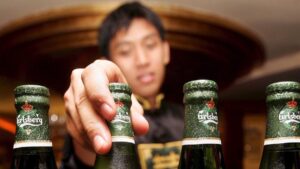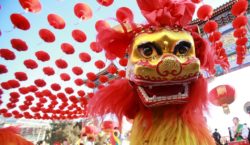
A rapid rise in Chinese COVID-infection numbers among the Chinese population could severely affect Carlsberg’s sales numbers during the much anticipated and important Chinese New Year. The Danish brewer has, during the past years, intensified its focus on the Chinese market.
After three years of Chinese governmental enforcement of a strict COVID zero-tolerance, rules have now been lifted creating fear of a rapid spread of COVID throughout China.
In Asia, China is the largest, and fastest growing, market for Carlsberg who owns 26 factories in the country. In 2021, 40% of Carlsberg’s total operating performance.
Despite lockdown, the brewer experienced a growth at the Chinese market in the first half of 2022 at 6% – a success Carlsberg’s Director, Cees’t Hart, assigned the Chinese New Year
The increase in COVID is expected to occur amongst elderly Chinese people. INsufficinet vaccination rates has caused a very low immunity among the population which earlier this week prompted USA, and today Malaysia, to require a negative corona test from incoming Chinese travelers as of the beginning of 2023.
China celebrates New Years on 23 January which normally means a significant travel activity and thereby, according to a vast majority of China analytics, an even greater rise in COVID numbers.
Fødevarewatch reports Danish business media, FINANS, has attempted to attain a comment from Carlsberg to how the brewer will address the re-opening of the Chinese society and if it fears increasing COVID numbers will affect sales. Further, FINANS wanted the brewer’s opinoin on potential precautions to initiate should these challenges arise. Carlsberg does not whish to comment on the matter.
Source: https://fodevarewatch.dk/Drikkevarer/article14763137.ece





